

|
|
|
 |
| |
 |
Chris Roxburgh, a renowned underwater photographer and author, has gained widespread recognition for his exceptional work capturing shipwrecks in the Great Lakes region. His remarkable photography and environmental efforts have been featured on local and national news platforms. He is the author of the highly acclaimed hardcover nonfiction book “Leelanau Underwater,” which has become the top-selling book in Northern Michigan. This book vividly showcases the shipwrecks in his hometown of The Manitou Passage, situated in Leelanau County, Michigan. Chris’s impressive work has been featured in several prominent publications, including the History Channel, Outside Magazine, and The Smithsonian, among others, as he continues to document shipwrecks throughout the Great Lakes region. In addition to his artistic accomplishments, he is actively working to raise awareness about the growing problem of plastics pollution in the Great Lakes, and he is a passionate advocate for preserving and protecting our precious waters. |
|
|
| |
Top Page Photo: The Cornielia B. Windiate sank on November 27th, 1875 after freezing spray encapsulated the vessel and pulled her under with all hands lost near Presque Isle - Lake Huron. The men most likely froze to death and slipped off the icy ship in a blizzard. She may have continued to sail like a ghost ship under the weight of the ice combined with being severely overloaded ultimately sank the ship. The 138-foot long 3-masted schooner was meant to carry 15,000 bushels of wheat but she was loaded with 21,000 bushels. Divers Lee Rosenberg and Meredith Hoag illuminate the ship’s lifeboat located towards the stern on the starboard side at a depth of 180 feet. |
|
|
|
| |
 |
| |
 |
Above: The SS Florida was one of the largest wooden freighters built in the 1800’s. The massive bulk package freighter was in a collision with the larger George Roby on May 21st, 1897 near Presque Isle - Lake Huron. Diver Mike Rihl makes his way over the engine that rolled out of the vessel when she slammed into the bottom at a depth of 204 feet.
Below: The Typo shipwreck is preserved from the ice-cold water in Lake Huron. On October 14th, 1899 the Typo was in a collision with the steamship W.P. Ketchum. Three sailors lost their lives when the ship sank in 200 feet deep water. Today the vessels sets upright on the lake floor. Diver Mike Rihl illuminates the ships bowsprit. Looking close you can see the anchors still locked onto the ships bow. |
|
|
|
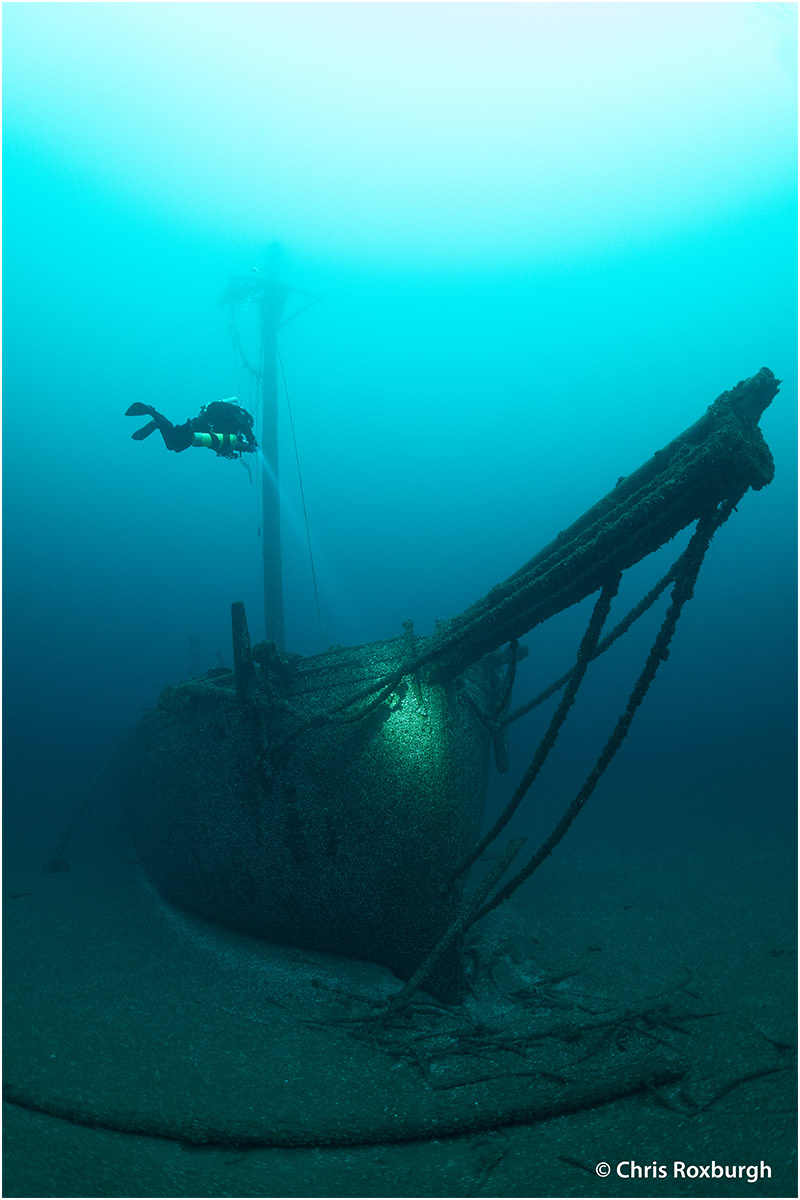 |
| |
 |
Above: The SS Eber Ward was a package freighter that served ports on the Upper Great Lakes from her launching in 1888 until she sank in the Straits of Mackinac on April 20, 1909, with the loss of five lives. The ship sank just to the west of the Mackinac Bridge in the Straits of Mackinac - Lake Michigan. The natural lighting guides our way through the ship at a depth of 147 feet.
Below: The Westmoreland was in Route to Fort Mackinac from Chicago with whiskey and according to legend $100,000 in gold for the Garrison army when she sank in 200 feet of water on December 7th, 1854 in a heavy blizzard. Seventeen of her 34 sailors managed to make it to shore with the remaining perished in the icy waters. Amazingly the Hogging arches are still in tact while being underwater for more than 150 years. Diver Dusty Klifman illuminates the ships wheel, which is still in excellent condition located on the ships stern. |
|
|
|
 |
| |
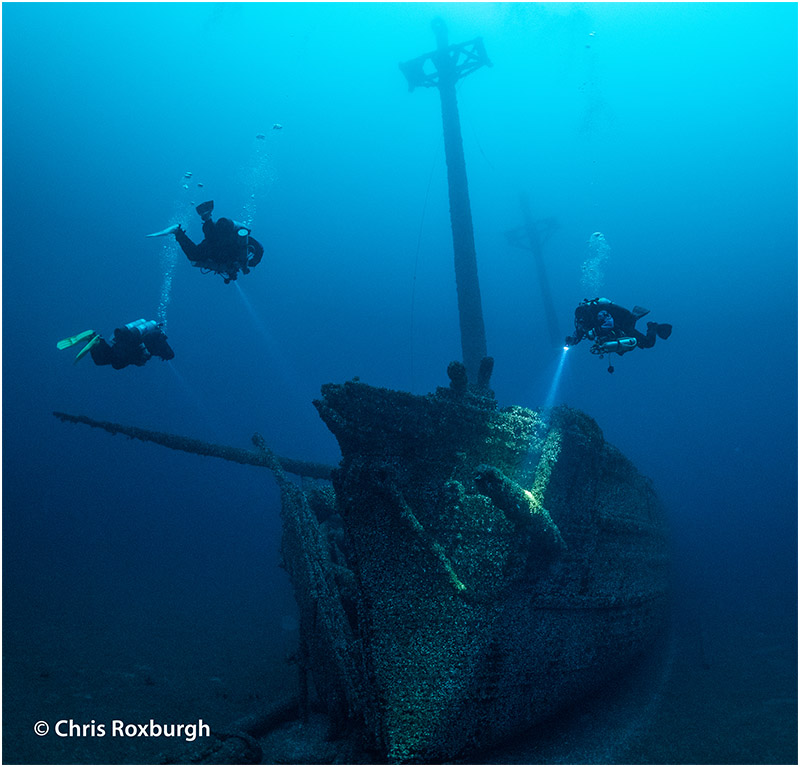 |
Above: The Kyle Spangler was in a collision with the schooner Racine on November 7th, 1860. The Spangler was loaded with 15,000 bushels of corn from bound down from Chicago to Buffalo, New York. Her Masts still stand tall in 180 feet of cold Lake Huron water - Presque Isle. On this dive day, the water temperature was 38 degrees Fahrenheit and crystal clear. Meredith Hoag illuminates the Woodstock anchor while other divers explore the wreckage.
Below: The Cornielia B. Windiate sank on November 27th, 1875 after freezing spray encapsulated the vessel and pulled her under with all hands lost near Presque Isle - Lake Huron. Divers Lee Rosenberg, Meredith Hoag and Tom Weber illuminate the stern sections of the ship including the deck cabins at a maximum depth of 180 feet. |
|
|
|
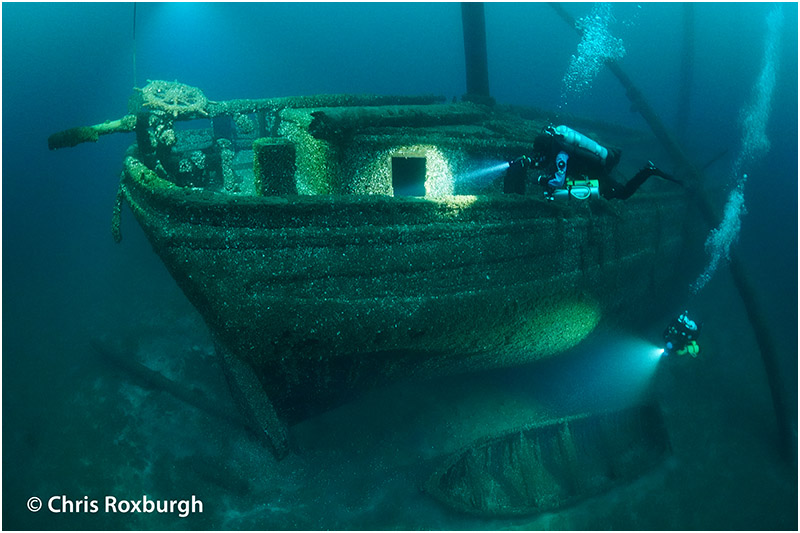 |
| |
 |
Above: The Eber Ward sank on April 20th, 1909 in the Straits of Mackinac. The Ward hit a chunk of ice while transitioning a ice field and sank within minutes taking five of her crew down to the lake bottom. Today the ship sets upright, mostly intact in 147 feet of water. This photo illustrates the immensity of the ship compared to the diver swimming towards her stern rudder.
Below: The Norman was in a collision may 30th, 1895 in Presque Isle Michigan with the steamer Jack. She sank within minutes in 200 feet deep of water. The Norman pulled three of her seven-man crew down with her. Tech Diver Lee Rosenberg lighting up the bow anchor now resting on the lake floor as, divers Liz Peppin and Meredith Hoag swim along the bow railing. |
|
|
|
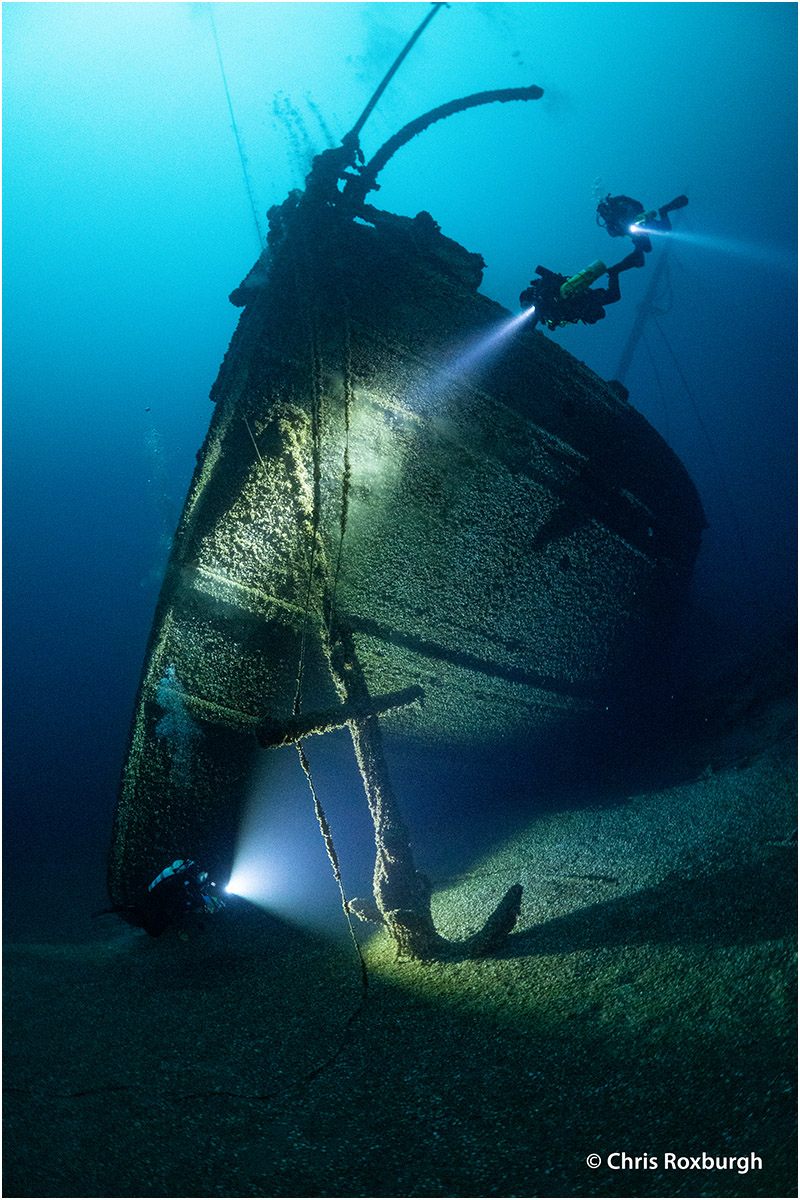 |
| |
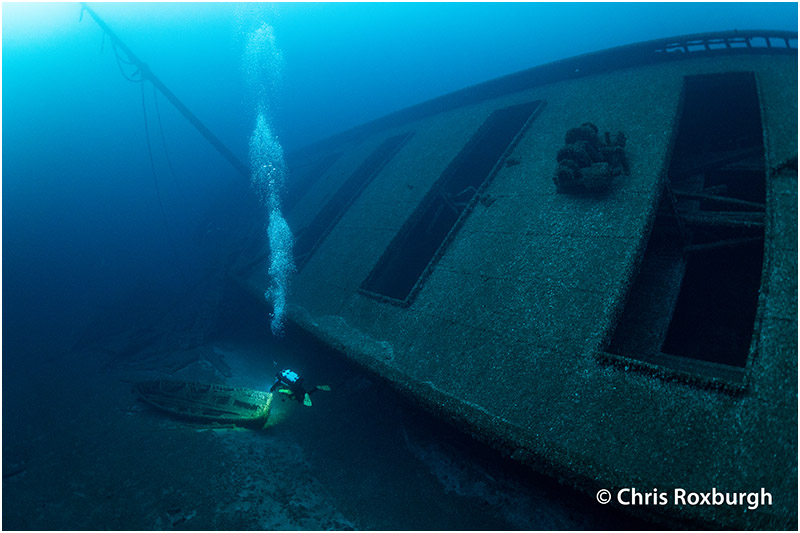 |
Above: At a depth of 200 feet, divers illuminate the small lifeboat of the 296 foot long 2,304 ton SS Norman. The Norman was powered by a triple expansion steam engine built by Globe Iron Works that produced 1200 horsepower, along with two 14 foot by 12 foot Scotch boilers. On May 30, 1895, the Norman was loaded with coal and headed to Escanaba. Dense fog reduced visibility, and the Canadian steamer Jack collided with the Norman, with the Jack hitting the Norman amidships and nearly slicing her in two. The Norman quickly sank, taking three crewmen with her.
Below: The Audubon sank on October 21st, 1854 after a collision with the Defiance. Both ships sank within a couple miles of each other after the collision. Diver Liz Peppin lights up a whiskey jug and the wheel at 170 feet deep in Presque Isle - Lake Huron. |
|
|
|
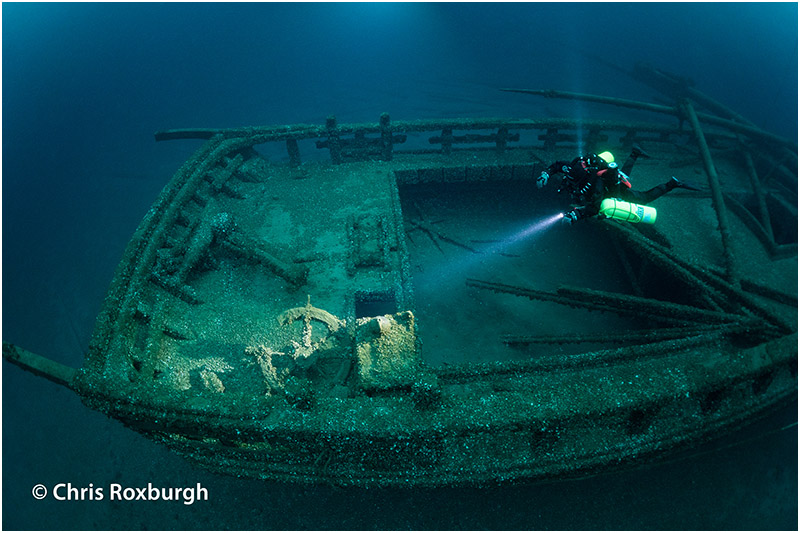 |
| |
 |
| |
 |
| |
|
| |
|
|
| |
|